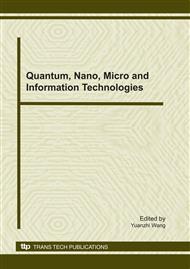p.55
p.61
p.67
p.73
p.79
p.85
p.91
p.97
p.103
Structural Characteristics and Photocatalytic Capabilities of Visible-Light Enabled Columnar TiO2 Films
Abstract:
Visible-light enabled titanium oxide (TiO2) films deposited on indium tin oxide (ITO) substrates are investigated for their capabilities to both pollution control and splitting water on hydrogen production. Three types of TiO2 films are prepared at different levels of doping nitrogen (N) and carbon (C) and sputtering power. All three samples are similar in morphological and microstructural features, but differ in their interfacial phase and dopants. For the N,C-codoped TiO2 film prepared at a higher sputtering power, tin ions can permeate into the growing TiO2 film from the ITO substrate and promote the formation of crystalline Ti1-xSnxO2 layer. It shows the highest photocatalytic oxidation rate over methylene blue (MB) solution under ultraviolet and blue light irradiation, respectively. This is ascribed to the photosensitized carbon on the columnar grains, leading an increase in the MB adsorption capacity and light harvesting efficiency. Conversely, the N-TiO2 film prepared at a lower power exhibits the highest photocurrent density of which a higher Schottky barrier formed at the TiO2/ITO interface. A hydrogen yield rate of 0.25 μmol/cm2 h is obtained under blue light irradiation. These suggest that the interfacial properties of TiO2/ITO film and C-doping truly control its photocatalytic capabilities in addition to the well-known surface states.
Info:
Periodical:
Pages:
79-84
Citation:
Online since:
November 2010
Authors:
Keywords:
Price:
Сopyright:
© 2011 Trans Tech Publications Ltd. All Rights Reserved
Share:
Citation:


